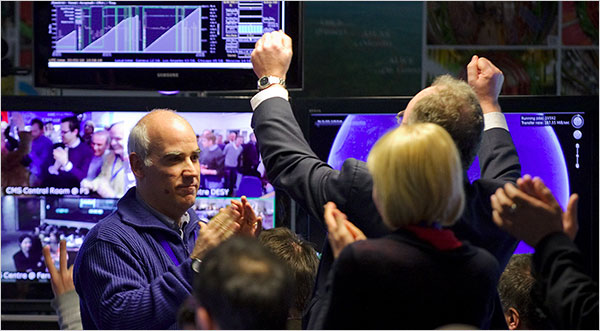The New York Times says:
Rolf Heuer, director general of CERN, speaking from Japan, said the new collider “opens a new window of discovery and it brings, with patience, new knowledge of the universe and the microcosm. It shows what one can do in bringing forward knowledge.” He added: “It will also bring out an army of children and young people who will get into the private sector and academia.”Yesterday I posted on GeekDad about our visit with Chad Orzel, author of How to Teach Physics to Your Dog, at his lab at Union College. One commenter felt that there is no reason for non-scientists to spend time trying to understand this stuff. But the reason is that physicists need the public to fund their research and understand the significance of their discoveries. It was lack of public interest that led to the end of the US's attempt to build the time of facility that now exists in Europe. According to the Times:
The first modern accelerator was the cyclotron, built by Ernest Lawrence at the University of California, Berkeley, in 1932. It was a foot in diameter and boosted protons to energies of 1.25 million electron volts, the unit of choice for mass and energy in physics. By comparison, an electron, the lightest well-known particle, is about half a million electron volts, and a proton about a billion.
Over the last century, universities and then nations leapfrogged each other, building bigger machines to peer deeper into the origins of the universe. But the end was decreed in 1993, the U.S. Congress canceled the Superconducting Supercollider, a 54-mile 20-trillion-electron-volt machine being built underneath Waxahachie, Texas, after its projected cost ballooned to $11 billion.

![Reblog this post [with Zemanta]](http://img.zemanta.com/reblog_e.png?x-id=66df773c-d015-49ab-9cd3-aa8daf931946)